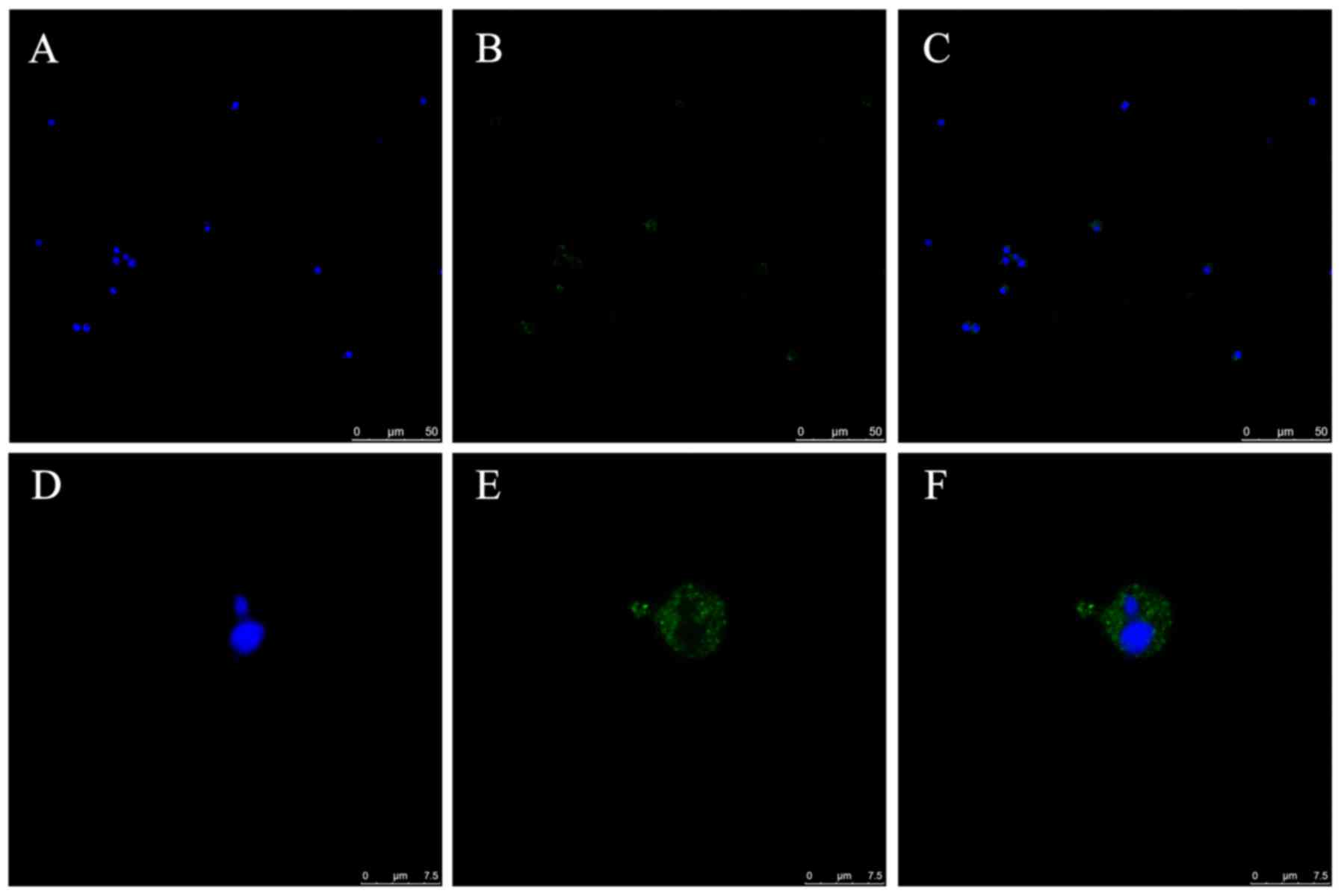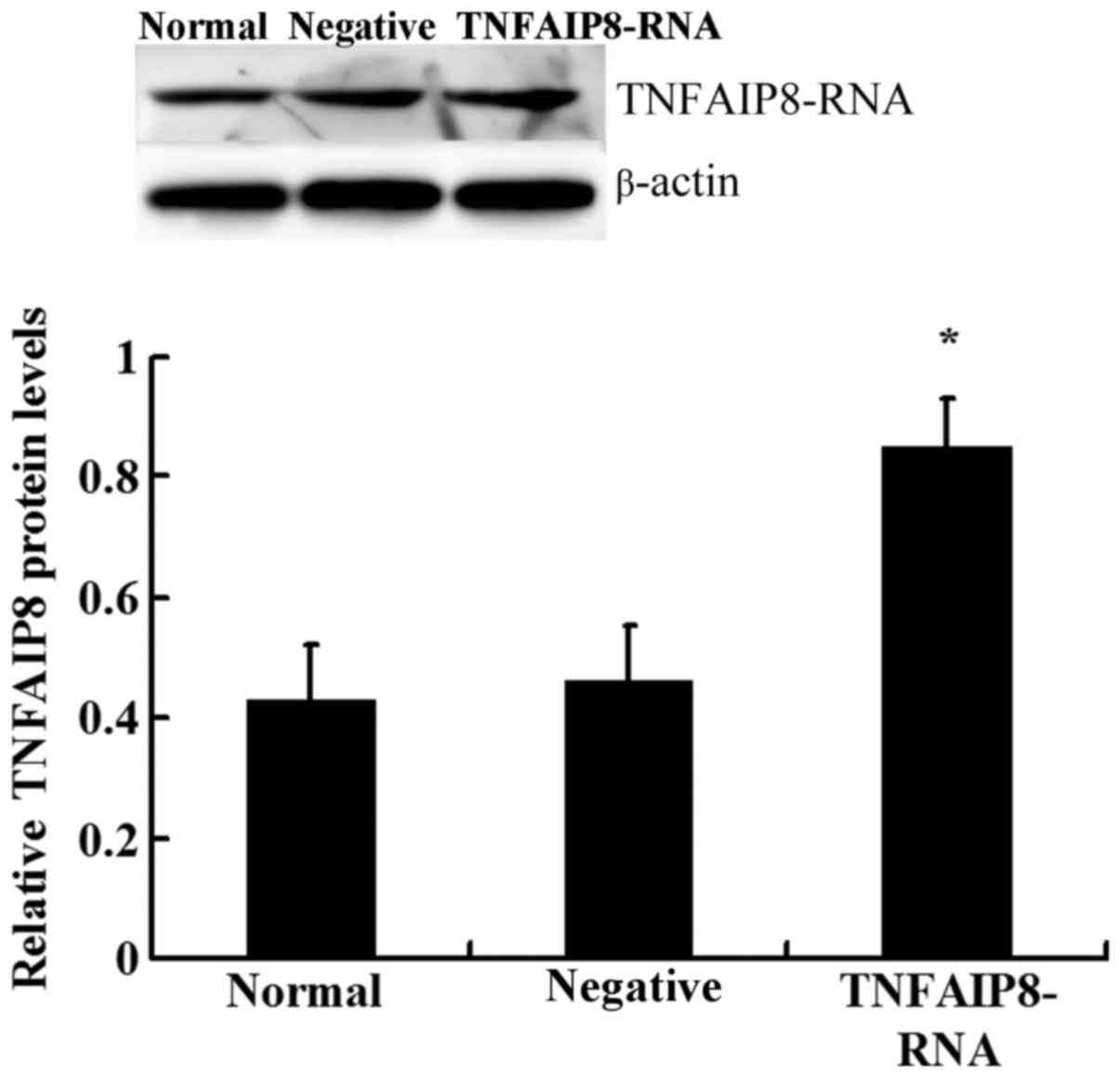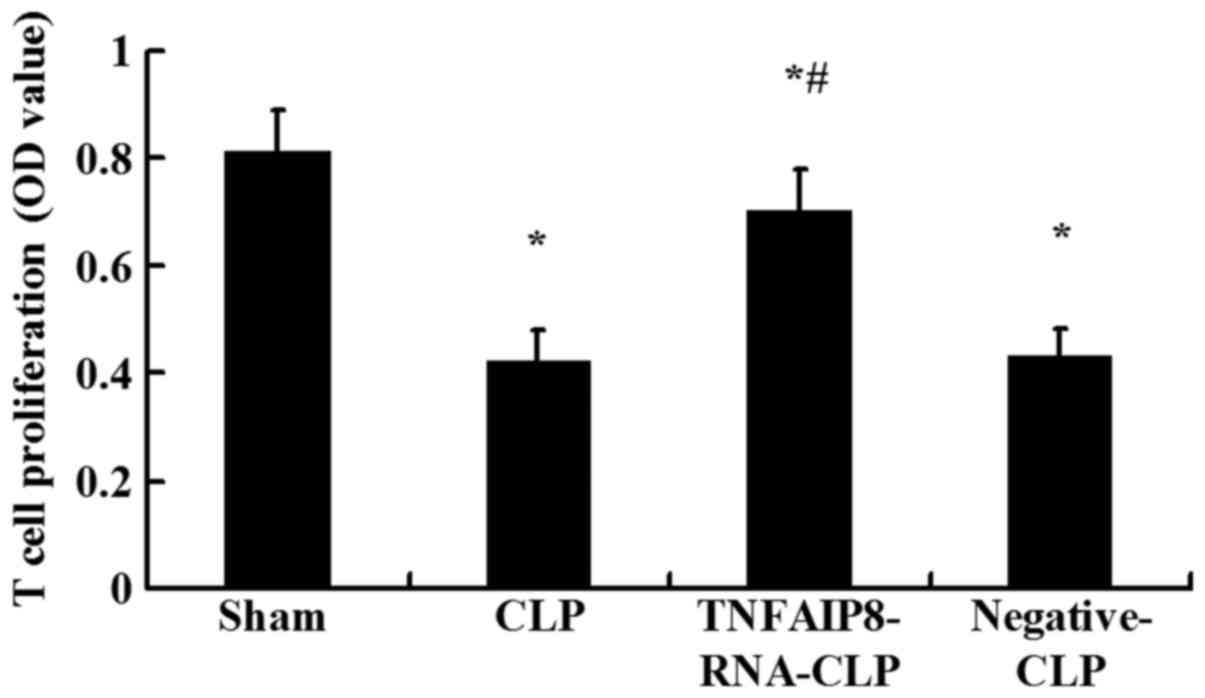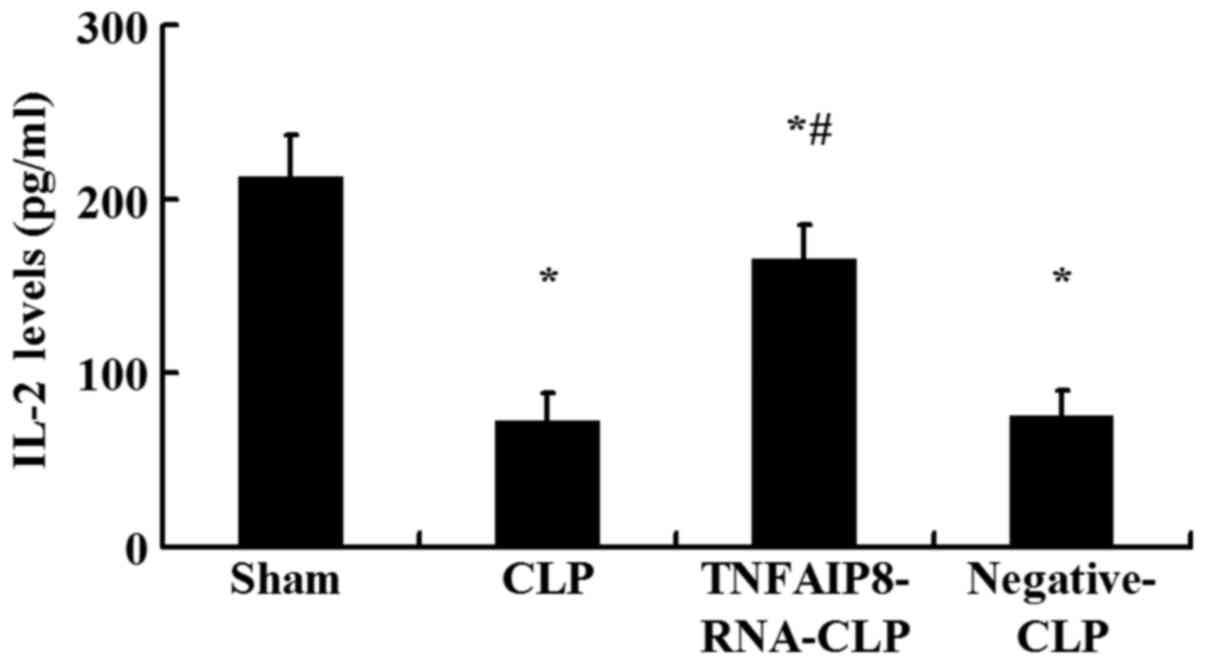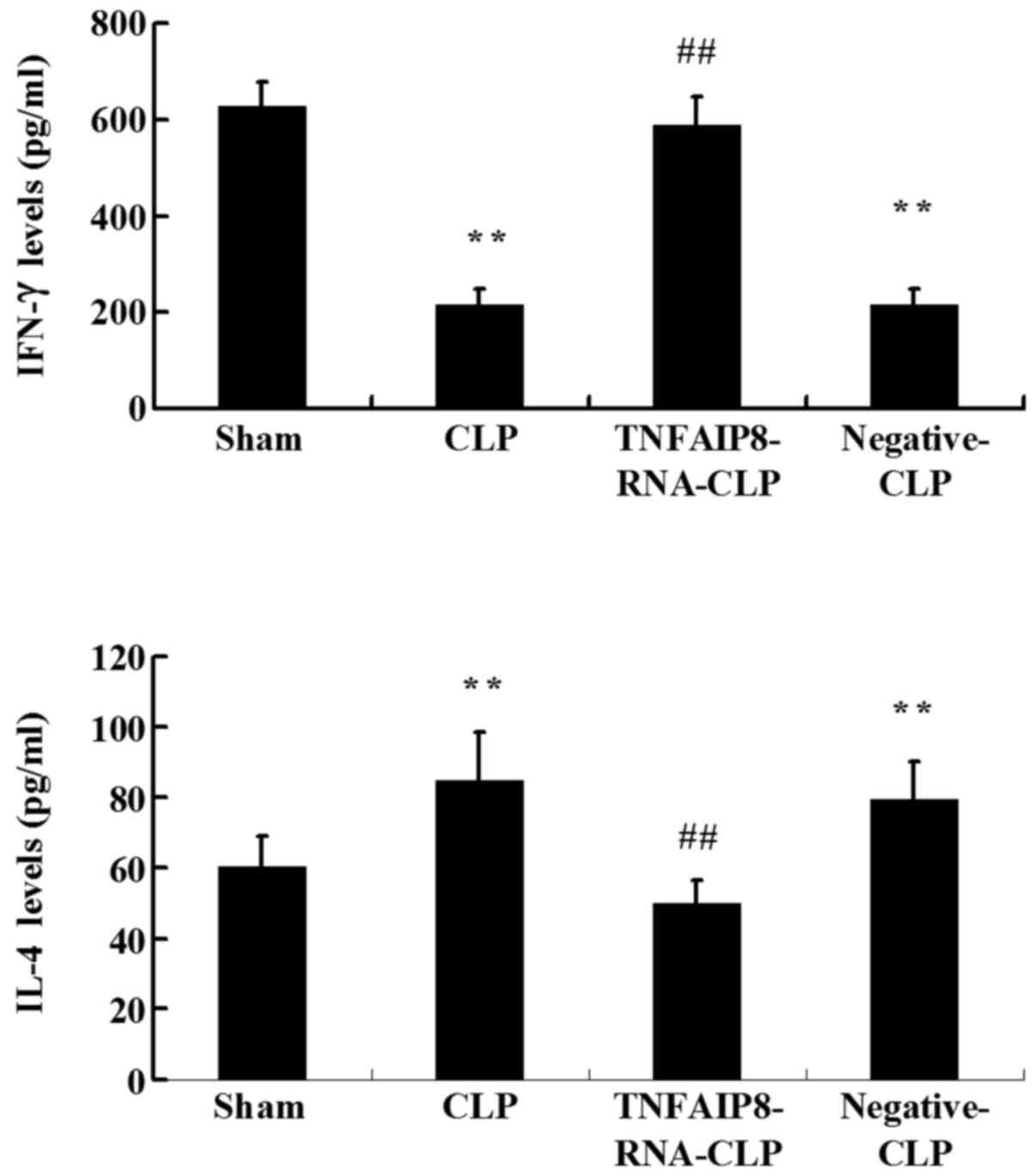|
1
|
Oberholzer A, Oberholzer C and Moldawer
LL: Sepsis syndromes: Understanding the role of innate and acquired
immunity. Shock. 16:83–96. 2001. View Article : Google Scholar : PubMed/NCBI
|
|
2
|
Weber GF and Swirski FK:
Immunopathogenesis of abdominal sepsis. Langenbecks Arch Surg.
399:1–9. 2014. View Article : Google Scholar : PubMed/NCBI
|
|
3
|
Gatewood MO, Wemple M, Greco S, Kritek PA
and Durvasula R: A quality improvement project to improve early
sepsis care in the emergency department. BMJ Qual Saf. 24:787–795.
2015. View Article : Google Scholar : PubMed/NCBI
|
|
4
|
Khakpour S, Wilhelmsen K and Hellman J:
Vascular endothelial cell Toll-like receptor pathways in sepsis.
Innate Immun. 21:827–846. 2015. View Article : Google Scholar : PubMed/NCBI
|
|
5
|
Delano MJ and Ward PA: Sepsis-induced
immune dysfunction: can immune therapies reduce mortality. J Clin
Invest. 126:23–31. 2016. View
Article : Google Scholar : PubMed/NCBI
|
|
6
|
Kumar D, Whiteside TL and Kasid U:
Identification of a novel tumor necrosis factor-alpha-inducible
gene, SCC-S2, containing the consensus sequence of a death effector
domain of fas-associated death domain-like
interleukin-1beta-converting enzyme-inhibitory protein. J Biol
Chem. 275:2973–2978. 2000. View Article : Google Scholar : PubMed/NCBI
|
|
7
|
You Z, Ouyang H, Lopatin D, Polver PJ and
Wang CY: Nuclear factor-kappa B-inducible death effector
domain-containing protein suppresses tumor necrosis factor-mediated
apoptosis by inhibiting caspase-8 activity. J Biol Chem.
276:26398–26404. 2001. View Article : Google Scholar : PubMed/NCBI
|
|
8
|
Wichterman KA, Baue AE and Chaudry IH:
Sepsis and septic shock-a review of laboratory models and a
proposal. J Surg Res. 29:189–201. 1980. View Article : Google Scholar : PubMed/NCBI
|
|
9
|
Rittirsch D, Huber-Lang MS, Flierl MA and
Ward PA: Immunodesign of experimental sepsis by cecal ligation and
puncture. Nat Protoc. 4:31–36. 2009. View Article : Google Scholar : PubMed/NCBI
|
|
10
|
Singh MP, Rai AK and Singh SM: Gender
dimorphism in the progressive in vivo growth of a T cell lymphoma:
Involvement of cytokines and gonadal hormones. J Reprod Immunol.
65:17–32. 2005. View Article : Google Scholar : PubMed/NCBI
|
|
11
|
Huang LF, Yao YM, Zhang LT, Dong N, Yu Y
and Sheng ZY: The effect of high-mobility group box 1 protein on
activity of regulatory T cells after thermal injury in rats. Shock.
31:322–329. 2009. View Article : Google Scholar : PubMed/NCBI
|
|
12
|
Zhang Y, Yao YM, Huang LF, Dong N, Yu Y
and Sheng ZY: The potential effect and mechanism of high-mobility
group box 1 protein on regulatory T cell-mediated
immunosuppression. J Interferon Cytokine Res. 31:249–257. 2011.
View Article : Google Scholar : PubMed/NCBI
|
|
13
|
Shinkai K, Mohrs M and Locksley RM: Helper
T cells regulate type-2 innate immunity in vivo. Nature.
420:825–829. 2002. View Article : Google Scholar : PubMed/NCBI
|
|
14
|
Miller AC, Rashid RM and Elamin EM: The
‘T’ in trauma: The helper T-cell response and the role of
immunomodulation in trauma and burn patients. J Trauma.
63:1407–1417. 2007. View Article : Google Scholar : PubMed/NCBI
|
|
15
|
Ma T, Han L, Gao Y, Li L, Shang X, Hu W
and Xue C: The endoplasmic reticulum stress-mediated apoptosis
signal pathway is involved in sepsis-induced abnormal lymphocyte
apoptosis. Eur Surg Res. 41:219–225. 2008. View Article : Google Scholar : PubMed/NCBI
|
|
16
|
Lang JD and Matute-Bello G: Lymphocytes,
apoptosis and sepsis: Making the jump from mice to humans. Crit
Care. 13:1092009. View
Article : Google Scholar : PubMed/NCBI
|
|
17
|
Kasten KR, Tschop J, Adediran SG, Hildeman
DA and Caldwell CC: T cells are potent early mediators of the host
response to sepsis. Shock. 34:327–336. 2010. View Article : Google Scholar : PubMed/NCBI
|
|
18
|
Valmiki MG and Ramos JW: Death effector
domain-containing proteins. Cell Mol Life Sci. 66:814–830. 2009.
View Article : Google Scholar : PubMed/NCBI
|
|
19
|
Wang L, Song Y and Men X: Variance of
TNFAIP8 expression between tumor tissues and tumor-infiltrating
CD4+ and CD8+ T cells in non-small cell lung
cancer. Tumour Biol. 35:2319–2325. 2014. View Article : Google Scholar : PubMed/NCBI
|
|
20
|
Zhang G, Hao C, Lou Y, Xi W, Wang X, Wang
Y, Qu Z, Guo C, Chen Y, Zhang Y, et al: Tissue-specific expression
of TIPE2 provides insights into its function. Mol Immunol.
47:2435–2442. 2010. View Article : Google Scholar : PubMed/NCBI
|
|
21
|
Sharma A, Yang WL, Matsuo S and Wang P:
Differential alterations of tissue T-cell subsets after sepsis.
Immunol Lett. 168:41–50. 2015. View Article : Google Scholar : PubMed/NCBI
|
|
22
|
Abboushi N, El-Hed A, El-Assaad W, Kozhaya
L, El-Sabban ME, Bazarbachi A, Badreddine R, Bielawska A, Usta J
and Dbaibo GS: Ceramide inhibits IL-2 production by preventing
protein kinase C-dependent NF-kappaB activation: Possible role in
protein kinase Ctheta regulation. J Immunol. 173:3193–3200. 2004.
View Article : Google Scholar : PubMed/NCBI
|
|
23
|
Cuenca AG, Delano MJ, Kelly-Scumpia KM,
Moreno C, Scumpia PO, Laface DM, Heyworth PG, Efron PA and Moldawer
LL: A paradoxical role for myeloid-derived suppressor cells in
sepsis and trauma. Mol Med. 17:281–292. 2011. View Article : Google Scholar : PubMed/NCBI
|
|
24
|
Diosa-Toro MA, Jaimes BFA, Rugeles LMT and
Velilla HPA: Cells with immunoregulatory properties and their
impact in the pathogenesis of sepsis. Rev Chilena Infectol.
28:572–578. 2011.(In Spanish). View Article : Google Scholar : PubMed/NCBI
|
|
25
|
Condotta SA, Cabrera-Perez J, Badovinac VP
and Griffith TS: T-cell-mediated immunity and the role of TRAIL in
sepsis-induced immunosuppression. Crit Rev Immunol. 33:23–40. 2013.
View Article : Google Scholar : PubMed/NCBI
|



